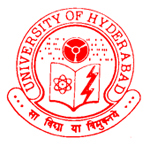Prof. Dr. Bruno M. MoerschbacherUniversity of Münster Institute of Plant Biotechnology and Biology Schlossplatz 8 48143 Münster Germany |
|
|
| Email: Net: |
moersch@uni-muenster.de www.uni-muenster.de/IBBP |
|
The research group of Prof. Dr. Bruno Moerschbacher has twenty years of experience in research on biologically active polysaccharides from plant and fungal cell walls. Lately, the main focus of the research has been on structure/function-relationships of partially acetylated chitosans. Chitosans are probably the most versatile and most promising biopolymers with superb physico-chemical properties and a host of interesting biological activities. Moreover, chitosans are generated by partial de-N-acetylation from chitin, one of the most abundant renewable resources on earth commercially extracted from shrimp peel wastes. Crop plants treated with chitosan can become resistant to disease, and even large scale burn wounds can heal without scar formation under chitosan dressings. Unfortunately though, these biological functionalities are seen sometimes, but not always, and this lack of reliability has so far obstructed the development of commercially viable products based on chitosan. We believe that this lack in reproducibility in the bioactivities of chitosans is due to a fundamental lack in understanding molecular structure/function relationships and cellular modes of actions of partially acetylated chitosans. If we knew which chitosan exactly is exhibiting which biological activity exactly, we should be able to successfully exploit the fascinating potential of this biopolymer.
We are, therefore, interested in elucidating the roles of the degree of polymerisation (DP), the degree of acetylation (DA), and the pattern of acetylation (PA) of chitosan oligomers and polymers on their biological activities towards micro-organisms as well as plant and human cells. We found the antibacterial and antifungal activities to be mainly determined by the DA of chitosan polymers, while the plant disease resistance inducing activities of chitosan polymers and oligomers were strongly influenced by both DA and DP. In collaboration with the group of Prof. Schneider from the Department of Dermatology of the University of Mannheim/Heidelberg, we found that the biological activities towards different types of human cells, e.g. stimulatory activities towards macrophages, are more complex and we have postulated that in addition to DA and DP, the PA, i.e. the distribution of acetyl groups along the linear chitosan chain, crucially influences these activities. However, all chitosans available today are produced from fully acetylated chitin using chemical methods of partial de-acetylation or complete de-acetylation followed by partial re-acetylation – and these methods invariably yield chitosans with random PA. We have therefore started to develop enzymatic tools for the generation and analysis of chitosan oligomers and polymers with non-random PA. We are using metagenomic as well as knowledge-based approaches to identify novel chitosan modifying enzymes, such as chitin deacetylases and sequence-specific chitosan hydrolases, we clone and express their genes heterologously either in E. coli or in eukaryotic systems, and we analyse the purified enzymes concerning e.g. their substrate specificities, cleavage mechanisms, and product patterns. We are now using computer based 3D modeling and substrate docking followed by protein engineering to optimise these enzymes for the enzymatic generation and for the characterisation by enzymatic/mass spectrometric fingerprinting of chitosans with defined, non-random PA which we can then analyse for their biological activities. Based on the knowledge gained, we are developing, together with Industry, improved chitosan-based plant disease protectants and wound dressings. Lately, we have also begun to aim at biotechnological in vitro and in vivo production of defined chitosans which will offer us access to larger amounts of fully defined and highly pure materials for further bioassays and, eventually, the development of marketable products. Our work is supported by a strong interdisciplinary and international network with physico-chemists, pharmacological engineers, and medical physiologists and microbiologists in Europe and world-wide, from both Academia and Industry.
expertise offered:
- gene isolation and identification, cloning and heterologous expression
- enzyme isolation and identification, purification and characterisation
- enzyme 3D modeling and substrate docking as a basis for protein engineering
- enzyme engineering e.g. through site directed mutagenesis or domain swapping
- chemical, enzymatic, and biotechnological production/modification of oligo/polysaccharides
- production and characterisation of polysaccharide nanoparticles
- mono-, oligo-, and polysaccharide analysis (GLC, HPTLC, HPAEC-PED, HPSEC-UV-RID-MALLS-viscosimetry, uHPLC-qTOF-MS)
- enzymatic/mass spectrometric fingerprinting to analyse patterns of chitosan acetylation
- HF-solvolysis at controlled low temperature for the selective cleavage of glycosidic bonds
- bioactivity assays (anti-bacterial, anti-fungal, plant resistance inducing activities)
- generation and analysis of transgenic plants (A. thaliana, T. officinale, overexpression, RNAi)
- axenic culture of the obligately biotrophic wheat stem rust fungus (P. graminis f.sp. tritici)




